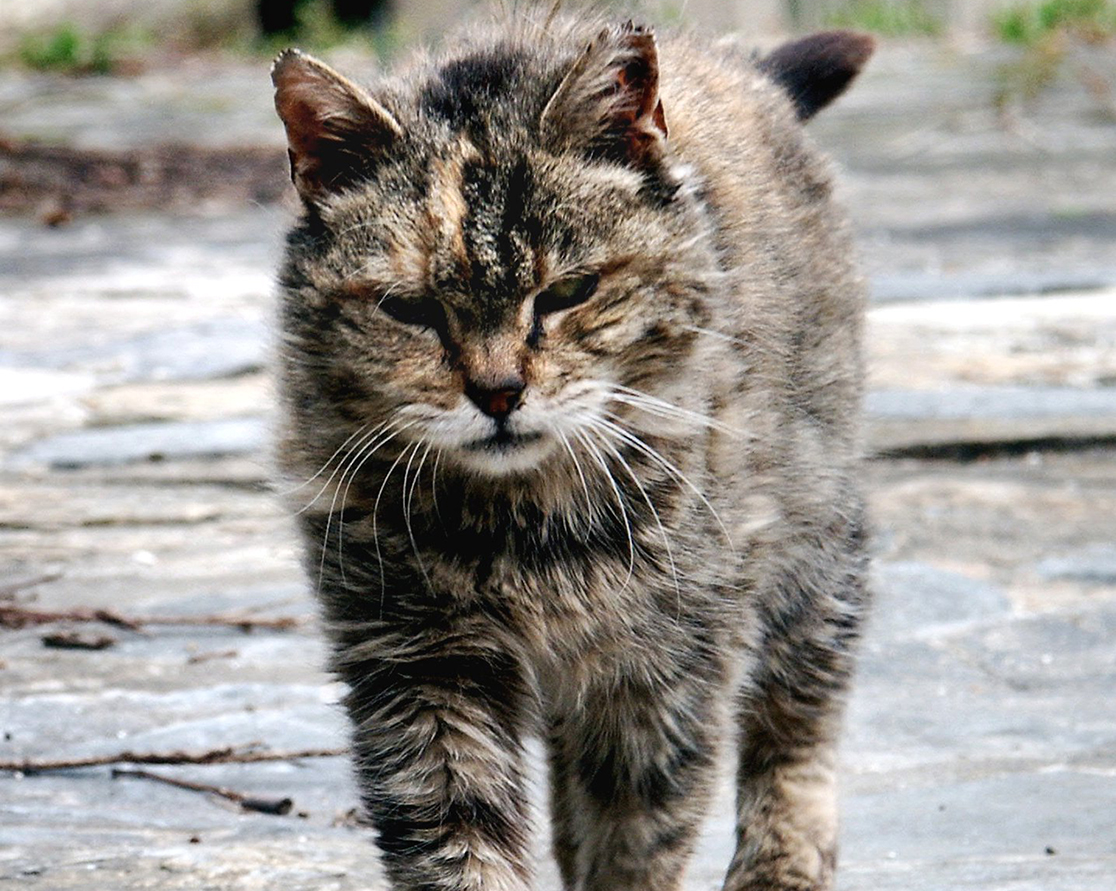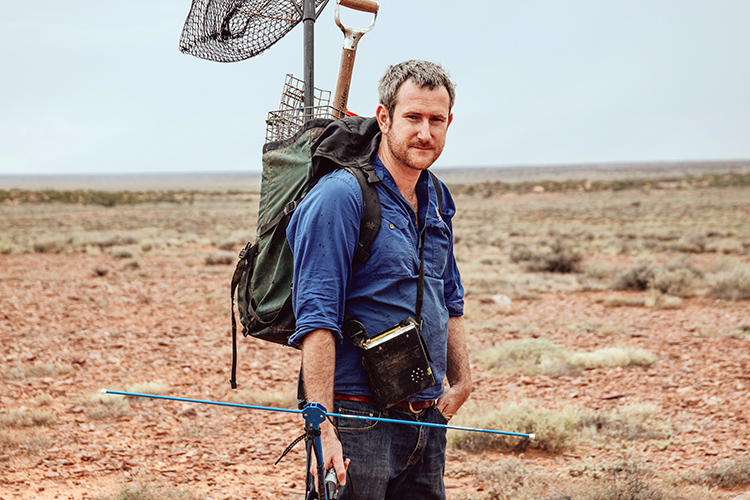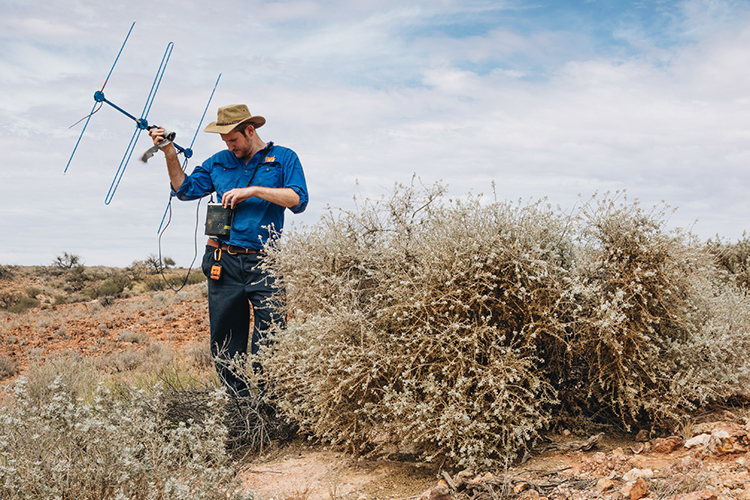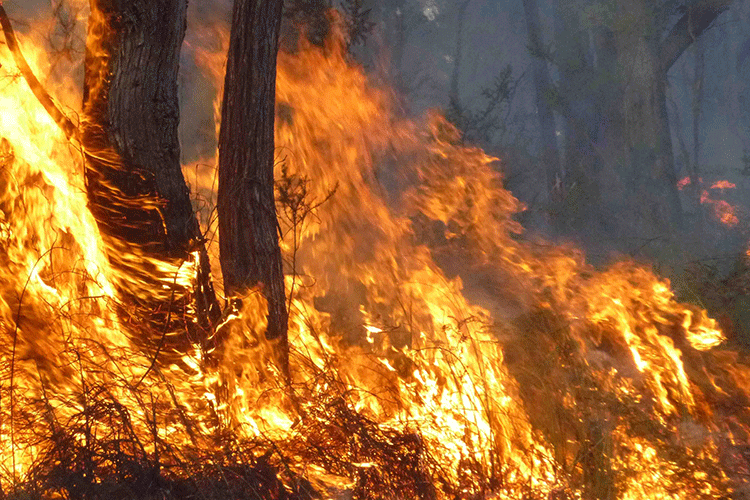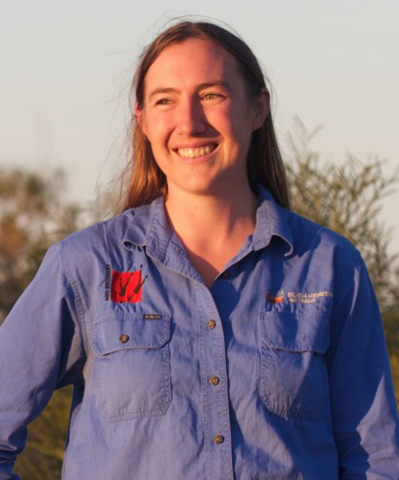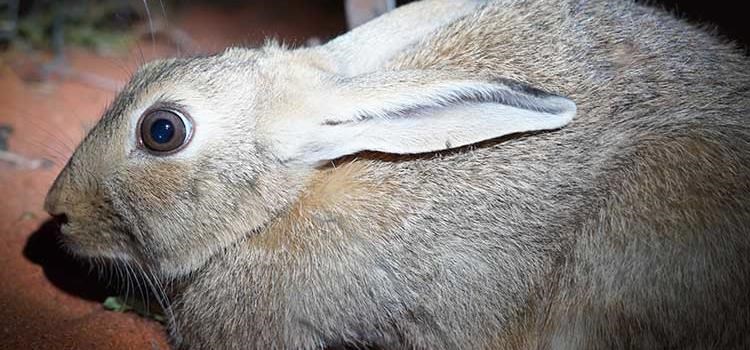
Project: 1.1.6
Integrated management of feral herbivores and feral predators
Project Leaders: Chris Johnson
Research in Brief
Rabbits and feral cats are individually two of the most widespread and destructive pest species in Australia. When rabbit numbers are abundant they also boost feral cat populations. As a result over the long-term rabbit bio-controls can be effective in reducing both rabbit and feral cat populations. However the sudden drop in rabbit numbers following the spread of a new bio-control could lead to prey switching by feral cats, momentarily increasing their impact on native wildlife. This project is conducting a landscape scale experiment at the Arid Recovery reserve in South Australia, to better understand when and how cat impacts to native animals change following changes in rabbit numbers. The findings will be valuable to informing feral cat management in all areas where rabbits are present. 
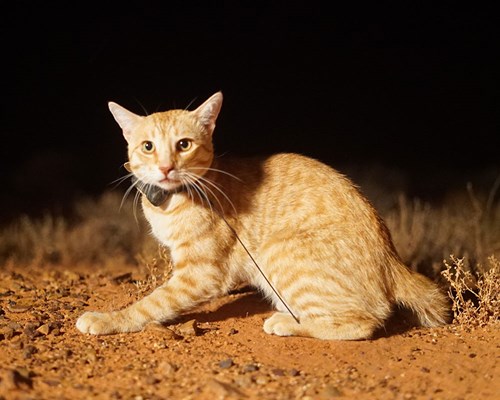
A feral cat fitted with a GPS collar. Photo: Hugh McGregor/Arid Recovery
Why is the research needed?
Feral cats and rabbits are two of the most widespread and destructive pest species in Australia. In Australia over 300 native species are adversely affected by rabbits due to land degradation and competition and about 80 species are at risk from feral cat predation. While their individual impacts are significant, there is concern that interactions between rabbits and cats can greatly increase impacts to threatened wildlife.
Since myxomatosis was released in the 1950s, biocontrols (rabbit viruses and associated vectors) have been Australia’s most effective tool in reducing rabbit numbers and their direct impact on the environment.
As well as reducing rabbit populations and their direct impacts, reduced rabbit populations also act to reduce feral cat populations over the long-term.
However, there is concern that when a previously abundant source of rabbits is suddenly removed by an effective biocontrol, the existing feral cat population could switch prey, thereby momentarily increasing their impact on native wildlife. There is some basis for the concern, when the first calicivirus swept through Australia in the late 1990s, some populations of native mammals declined.
Determining if prey switching occurs, when, how and quantifying the impacts will be essential to better integrating feral cat control with rabbit control, in order to avoid unintended negative consequences and to maximise benefits for native wildlife.
How will the research help?
Whilst prey switching has been documented, little is known on the response of individual cats when rabbit numbers drop. We will conduct a landscape-scale experiment at the Arid Recovery reserve in South Australia to demonstrate whether feral cats in Australia’s arid zone switch prey following reductions in rabbit numbers, and to define and quantify impacts to native animals.
By determining how feral cats respond when an abundant supply of rabbits is removed, we will understand when native wildlife is most vulnerable to cat predation. This knowledge will be vital to informing management decisions, such as: if cat control activities are needed in an area when a rabbit biocontrol is active in order to prevent cats having a magnified impact on native wildlife; and the best timing for such activities.
Understanding more about the interactions between rabbit populations and feral cat populations may also present opportunities to leverage rabbit control in the management of feral cats and their impacts. All native wildlife coexisting with cats and rabbits will benefit from the research.
The research is highly relevant to most of southern Australia which contains the highest and most widespread populations of rabbits.
It is also especially relevant to the arid and semi-arid zone where cats and rabbits are two of the most significant threats impacting threatened wildlife, especially mammals.
The research will be of particular benefit to the Plains Mouse (Pseudomys australis), a threatened mammal living in central South Australia. Populations of Plains Mouse appear to be strongly influenced by changes in cat and rabbit populations.
 How will cat predation on the threatened Plains Mouse change when rabbit numbers fall? Photo: Hugh McGregor/Arid Recovery
How will cat predation on the threatened Plains Mouse change when rabbit numbers fall? Photo: Hugh McGregor/Arid Recovery
What research activities are being undertaken?
To determine changes in cat behaviour before and after rabbit decline, we will follow the fate of 30 cats living in an arid ecosystem which includes abundant rabbits and the threatened Plains Mouse.
30 cats will be fitted with either a GPS collar to follow their movement, or a video collar to measure their hunting rate. This will enable us to determine: survival rates; the total distance travelled each night; and the number of rabbits and natives killed per 24 hours. We will also record cat activity and density.
Prey populations will be monitored by both spotlight counts and track transects.
 Who is involved?
Who is involved? The research is being undertaken by the University of Tasmania in collaboration with Arid Recovery, a private conservation organisation/reserve. Additional expertise is being provided by the Invasive Animals CRC and Ecological Horizons.
This research is being conducted on land which is part of the 123 square kilometre Arid Recovery reserve in South Australia. The country belongs to the Kokatha people (http://www.kokatha.com.au/), who work with Arid Recovery and manage much of the surrounding pastoral stations.
The project started in late 2015 and will end in late 2018. Rabbit removals will occur 2016-2017, with findings available in late 2017. Further research on whether feral cats prefer rabbits over other species will commence in 2018.
More Information
For more information please contact:
Hugh McGregor - hugh.mcgregor@utas.edu.au
Top Image: Plentiful rabbits boosts feral predator populations. Photo: Hugh McGregor/Arid Recovery
